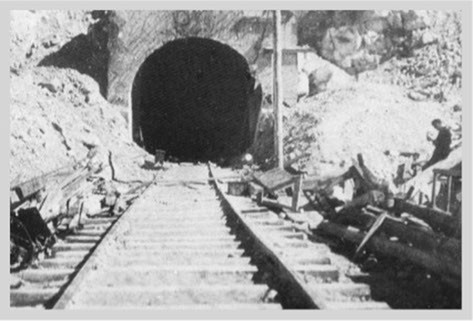V2 base Wizernes-Helfaut
In July 1943 the Germans began the construction of a base to build and launch V-2 rockets. Preparations for the rocket launches were made under a giant concrete dome, which measured 230 feet in diameter and had a thickness of 16 feet. Below ground almost 5 miles of tunnels for storage and workshops were built while a system of railway tracks carried the missiles around the complex. When the 46 foot tall rockets arrived in the assembly hall under the dome, they had to be raised up, prepared and then moved out to one of the two launch pads. It was planned to launch between 40 and 50 V-2 rockets every day from La Coupole. The plant was never completed because from March 1944 the Allies commenced saturation bombing of it, as part of operation Crossbow, a campaign directed against the Germans' high-tech weapons. Over the next six months, the area was bombed 15 times. In August 1944 the Germans abandoned the building and left the area. Meanwhile the Allies were advancing after the Normandy landings two months earlier - so fast in fact that just 1 month later they over-ran the unfinished base. No V-2s were ever fired from La Coupole and the area is today preserved as a museum.
In late 1943 the Germans built a radio guidance bunker in the town of Roquetoire, 8 km. southeast of La Coupole, to control the V-2s after they were launched from La Coupole. This bunker measured 35 x 22 meter, stood seven meter high and had walls 3.5 meter thick. To increase the precision of the V-2 rockets, they could be remote controlled and any correction of, while they were en route to England, would have been made from the bunker in Roquetoire.



© Picture by Martin Dudle-Ammann
© Picture by Martin Dudle-Ammann
© Picture by Martin Dudle-Ammann
<
>

